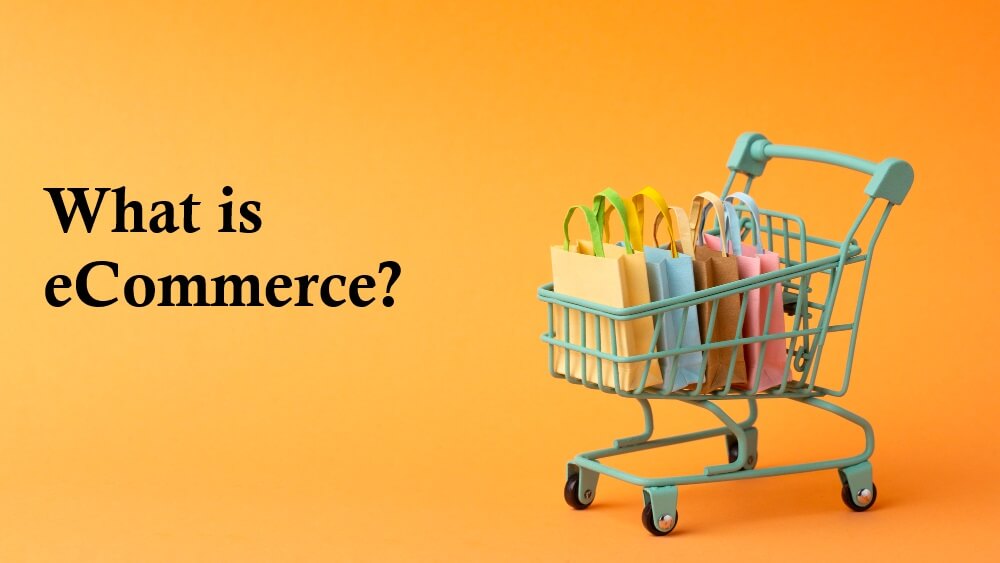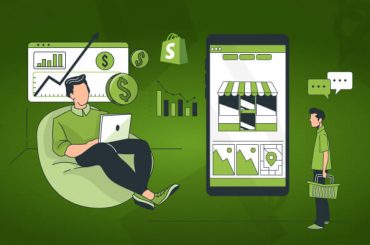What Is eCommerce? A Detailed Guide for 2024
Last Updated | March 27, 2024
Table of Contents
Welcome to the digital revolution! This era has transformed our lives in ways we couldn’t have imagined. One of the most significant changes is the advent of electronic commerce, or eCommerce, as we commonly know it. Thanks to its unparalleled convenience and simplicity, we’ve all dipped our toes into this world.
This article explores what is ecommerce, its workings, and its different types. Consider it a one-stop guide on what is eCommerce business. It will unpack everything you need to know about buying and selling online and then some.
How Does eCommerce Work?
The eCommerce machine is large and complex, with countless moving parts, but its foundation rests on three main components: the eCommerce platform, online marketplaces, and social selling channels. Read ahead to understand what eCommerce means.
Types of eCommerce Platforms and Online Sales Channels
Let’s get right into explaining the key components of eCommerce:
ECommerce Platforms
An eCommerce platform is the foundation of an online store. It comes with several prebuilt functions to sell products online, including product listings, cart management, payment processing, order fulfillment, and more.
There are several eCommerce platforms available for users to pick from:
- Shopify
- BigCommerce
- WooCommerce
- Wix Ecommerce
Businesses use these platforms to build their online stores. They offer countless customization options, payment processors, and external integration—both free and paid.
Online Marketplaces
An online marketplace is a virtual space connecting buyers and sellers. It offers products from several vendors on its platform, which allows it to attract a large customer base and retain customers because they know they have several options.
The most common examples of online marketplaces include:
- Amazon
- eBay
- Etsy
- Walmart
These online marketplaces are also some of the biggest companies in the world, a testament to the insatiable demand that eCommerce can generate.
Social Selling Channels
A social selling channel leverages the power of social media platforms and their billions of users. Here, products are promoted and sold directly to customers, catering to the demand of sensationally large numbers of people.
Social networks also allow stores to market their products with incredible precision. This will enable brands to get their products in front of the people they know are interested in them. Moreover, communication is straightforward with social networks. Customers can send direct messages to brands and get responses quite quickly.
Payment Methods for eCommerce
Now that you know what eCommerce is and how selling works, the next step is payments—more specifically, secure and convenient payment methods. In today’s digital age, several options for paying for online purchases and picking the right one impact conversions and customer satisfaction.
The popular payment methods for eCommerce are:
- Credit and debit cards are the most commonly used payment methods because they are familiar and safe.
- Digital wallets. Using a digital wallet like PayPal, Google Pay, or Apple Pay provides a fast and secure way to make payments by storing information when needed.
- Buy now, pay later. These services allow users to pay for their purchases in installments, making it easier for more people to get what they need.
- Bank transfers. In some regions, businesses let customers transfer payments directly to their bank accounts.
- Cash on delivery. Some customers still prefer to pay in cash. When their order is delivered, they hand their payments to the delivery driver, who submits the order to the delivery company.
Choosing the exemplary payment service comes down to several factors. This includes:
- The Target Market
- Location
- Product Type
- Customer Preference
- Transaction Fees
- Convenience
Types of ECommerce Businesses Explained
In eCommerce, there are four main business models to work with. Each model caters to different customers and operates differently from others. These are:
Business to Consumer (B2C)
The most common eCommerce model involves businesses selling their products or services directly to consumers. If you’ve ever bought something online, you’ve used B2C commerce. For example, Amazon, Walmart, and Nike use this model.
Business to Business (B2B)
What is B2B commerce? It is when one business sells its product to another. These transactions are commonly for raw materials, software solutions, office supplies, marketing services, etc. A B2B order is generally more complex and in a larger quantity. Alibaba and Office Depot use the B2B model.
Consumer to Consumer (C2C)
In B2C, consumers sell directly to each other. These transactions are for handmade, homemade, custom, and used clothing, etc. Such products are sold mainly via social media, where the seller posts the items for sale, and buyers get in touch if they want to make the purchase. For example: Etsy, eBay, Facebook marketplace
Consumer to Business (C2B)
In C2B, consumers sell their products, services, or skills to businesses. The best example of this is the freelancers that businesses hire. A business could work with freelance designers, writers, programmers, or even accountants. Another example is consumers selling their stock photos to businesses to use for media purposes.
Conclusion
ECommerce has changed the way the world buys and sells. It offers immense convenience, unparalleled accessibility, and global reach unlike any other. Understandably, eCommerce has several components i.e. online transactions to digital marketing, all of which are essential.
As technology continues to evolve, we will see innovation in eCommerce as well. This innovation will allow eCommerce to become more competitive, evolving to better meet the needs of its customers. Whether you’re a small business or a large one, eCommerce gives everyone the chance to get a piece of the pie.
FAQs
What Is eCommerce?
Electronic commerce, or eCommerce, is the buying and selling of goods and services using the Internet. There are countless components to eCommerce, from online shopping on familiar websites to social media selling and even digital product downloads.
What Are the 3 Types of eCommerce?
While we’ve mentioned four types of eCommerce, there are three main ones:
- Business to consumer (B2C)
- Business to business (B2B)
- Consumer to consumer (C2C)
What Is an Example of eCommerce?
Common examples of eCommerce include:
- Ordering food through an app
- Buying clothes online
- Downloading an eBook
- Purchasing a subscription
What Is an eCommerce Website?
ECommerce is a digital storefront that enables businesses to sell their products and services online. It operates similarly to a brick-and-mortar store, only it is available 24/7 and can be accessed globally. An eCommerce website has built-in product listings, shopping carts, payment gateways, and order-tracking features.







